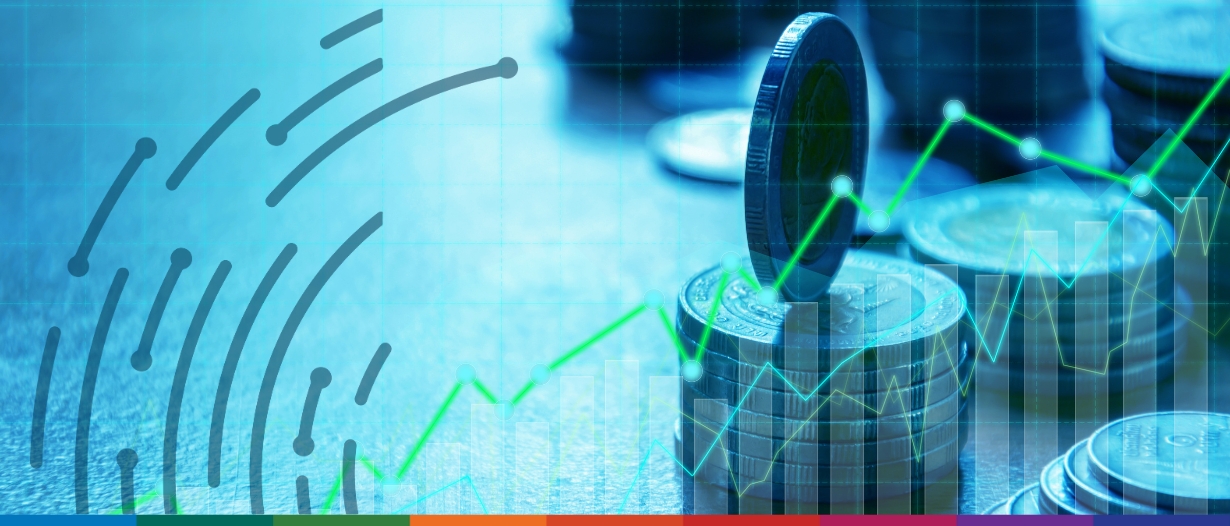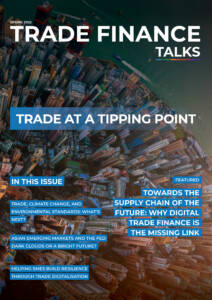The COVID-19 pandemic may have wreaked havoc on global trade and supply chains over the last 18 months, but one upshot to the upheaval has been the increased use of digitalised trade finance tools.
One industry expert who has seen this transition first-hand is Baris Kalay, head of trade and supply chain finance for Europe, Middle East, and Africa (EMEA) at Bank of America, who caught up with TFG’s Deepesh Patel at ITFA’s Annual Conference held in Bristol, England.
Kalay has been at Bank of America for 10 years, and has worked in trade, finance, and banking roles for over 20 years in countries such as Turkey, Russia, and the Netherlands.
Having first seen the early evolution of supply chain finance, Kalay is now witnessing its digitalisation, which is happening at a faster rate than ever as a result of the pandemic.
“I think the keyword is ‘accelerated’, because the trade finance and supply chain finance industry was working on a number of digitisation ideas and initiatives well before COVID-19, but after COVID-19 all of these initiatives have become a necessity,” said Kalay.
“In other words, COVID-19 pressed the accelerate button, and there was absolutely no choice other than executing on these ideas and initiatives in terms of digitisation.”
What’s different about this latest push towards digitalisation, as Kalay sees it, is that there is no going back, now that both banks and corporates have seen it in action and have seen its potential.
“Digitisation is there, technology is there, and it is working – even for simple things like e-signatures,” he said.
“I don’t remember the last time that I signed a document physically, and I really enjoy doing it electronically – it’s very fast and efficient, so I think there is no turning back.”
Realising the tangible benefits of digitalised trade finance
By prioritising digitalised trade finance tools, Bank of America has been able to improve the customer experience for its clients, and has helped set an example for the rest of the industry to follow.
“The main improvement is in how we interact with our customers, and digitisation has helped that,” said Kalay.
“Thanks to digitisation, onboarding is now simpler and faster. And thanks to digitisation, we can now provide a lot of reporting to our clients through our channels with one click, and we are able to reduce the amount of paper used – which is also good for the environment.”
What’s more, using digital technologies has saved time for all parties involved, which means that clients and suppliers can access trade finance faster, which in turn brings working capital benefits that go beyond customer experience.
Use cases – executive smart contracts and supplier onboarding
Asked to give examples of digital technologies that Bank of America has introduced for trade finance, Kalay pointed immediately to e-signatures as one of the most important.
“We can now accept e-signatures in more than 40 jurisdictions, and again, from issuance to contract amendments to contract executions, we can execute this digitally, which is a huge plus. It’s very simple, but very, very efficient,” he said.
Secondly, Kalay was keen to mention Bank of America’s digitised supplier onboarding portal, which saves time for the bank, its clients, and their suppliers.
“We launched a supplier onboarding portal where our buyers and supply chain finance clients can upload their spend and supplier data and get very good, detailed, real-time analysis,” he said.
The third digital improvement introduced by Bank of America relates to APIs.
In addition to its traditional means of connecting with clients – such as file upload and host-to-host connection – the bank can now contact its clients through APIs.
“This will mean two things,” said Kalay. “Number one, shortened technical integration at the beginning of the supply chain finance programmes, and also our clients are now able to get real-time reporting on the status of the invoices.”
Finally, Bank of America is also working with Marco Polo, a trade finance blockchain network founded by Germany’s Commerzbank and LBBW bank, to integrate supply chain finance and receivables finance, with a focus on enlarging supplier reach.
Bank of America joined the Marco Polo network as a partner in 2019.

Future trends – legal framework and blockchain
Looking ahead to the next 12 months, Kalay said he expects to see further reductions in paper-based trade, and improvements to the legal framework around electronic documents.
“Some traditional trade finance products – like Letters of Credit, collections, etc. – are still paper-based,” he said, “but hopefully with improved acceptance of e-bills of exchange and e-drafts, digitisation will spread to those more traditional trade products, which is something that the industry will be very pleased with, together with our customers.”
Kalay also expects to see developments in blockchain technology that will improve areas such as purchase order tracking, which will allow Bank of America to easily locate purchase orders from the supplier of a client’s supplier and so on.
And finally, with such improved “visibility”, Kalay explained, the bank can make better decisions in all areas, including ESG.
“Environmental elements, social, and governance elements will be more visible when you have the full picture of the chain,” he said.
“And I think the last trend will be seamless interaction, helping banks to get data directly from clients’ ERP [enterprise resource planning] to get more efficient, faster data to make more intelligent decisions.”













































